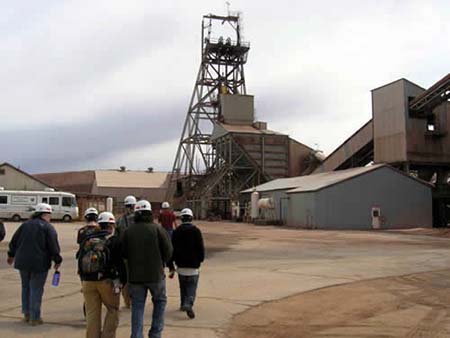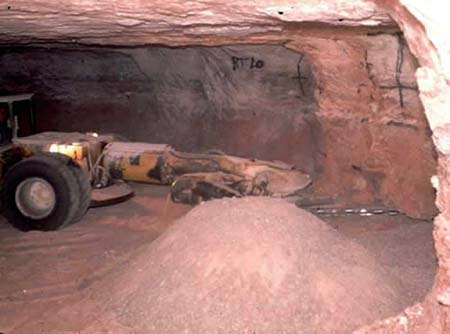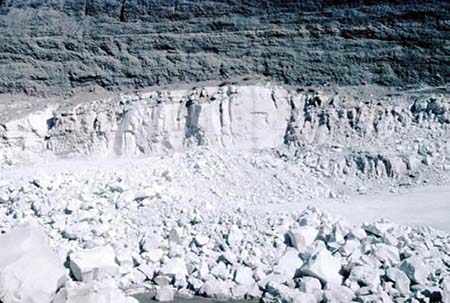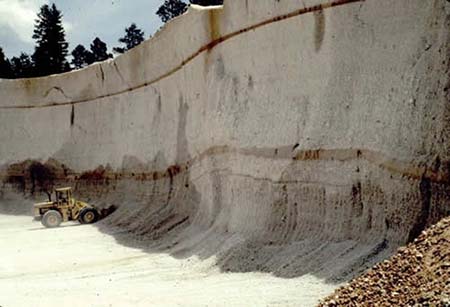
Industrial Mineral Resources in New Mexico
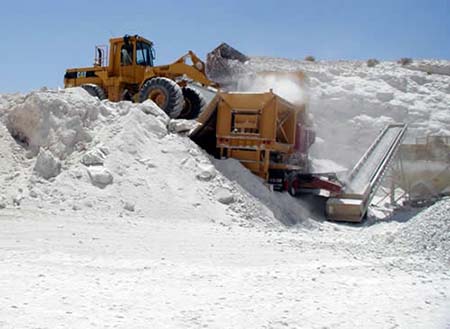
Industrial minerals are defined as a naturally occurring rock or mineral, exclusive of metal ores, mineral fuels, and gemstones. Industrial minerals are diverse materials and are used in virtually every aspect of modern life, providing raw materials for many industries, including building, manufacturing, and agriculture. The world of industrial minerals covers more than 60 substances, from Abrasives to Zeolites. Many of the industrial minerals are critical minerals and essential to our economy and national defense, but not produced in the U.S. Production of industrial minerals has been and remains important to the economy of New Mexico. Mining districts with industrial minerals are summarized in Resource Map 24 (Mining districts and prospect areas in New Mexico) and in NMBGMR Memoir 50E (Industrial Minerals and Rocks).
Some industrial minerals mined in New Mexico include:
- Aggregates
- Carbon dioxide
- Cement
- Clay
- Gypsum
- Helium
- Humate
- Perlite
- Potash
- Pumice
- Zeolite
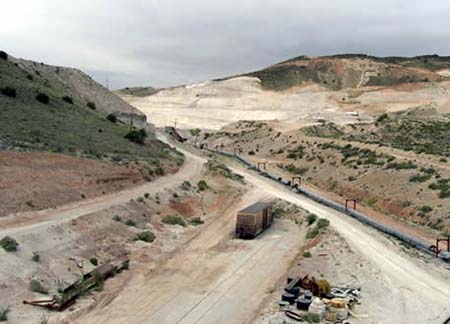
Other industrial minerals are found in New Mexico, but have not been mined in recent years, include:
- Asbestos
- Barite
- Beryllium
- Garnet
- Nepheline syenite
- Rare Earth Elements (REE)
- Tellurium
New Mexico leads the U.S. in production of potash, zeolite, and perlite. Intreped Mining LLC and Mossaic operate potash mines in the Carlsbad potash district. Potash is used as fertilizer and as a chemical in specialty and industrial markets. St. Cloud Mining Co. (a subsidiary of Imagin Minerals, Inc.) operates the largest zeolite mine in the U.S. at the Stone House mine in Sierra County. Zeolites are minerals found disseminated in altered volcanic ash and clinoptilolite is the predominant mineral with unique physical, chemical, and cation exchange properties for uses in agriculture, industrial, and environmental applications. In New Mexico, perlite is found in high-silica rhyolite lava flows and lava domes that are typically 3.3-7.8 Ma. A video of the Socorro perlite mine is available. Pumice is found in the Jemez Mountains and the Mogollon-Datil volcanic field. New Mexico produces 7 different types of cement at a total estimated capacity of 500,000 short tons/year of cement from the Tijeras cement plant operated by Grupos Cementos de Chihuahua (GCC) near Albuquerque. Centex operates the White Mesa gypsum mine near Cuba and 2 wallboard plants (Albuquerque and Bernalillo). Two types of clay are mined in New Mexico: common and fire clay. Common clay is used for making bricks, roofing granules, and quarry tile. Humate is produced from five mines in the San Juan Basin, New Mexico. Aggregate production is at record levels with ~120 active aggregate mines in 2019. Aggregate is used highways, railroad, and home construction. Several commodities have future potential in the state. Although garnet has not been produced in New Mexico in recent years, at least one company is examining areas in the state for potential resources for uses as an abrasive. A company is examining Cretaceous black sandstone deposits in San Juan Basin for titanium, iron, rare-earth elements, and zircon. Exploration for beryllium in the San Mateo Mountains, Iron Mountain, and Victoria district is on-going. Kaolin is found in the Taylor Creek area, which could be economic as prices increase. The future of industrial minerals in New Mexico is excellent and should remain in production for years to come.
